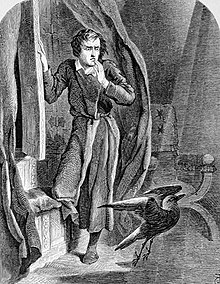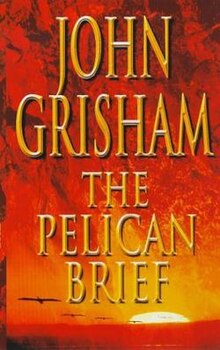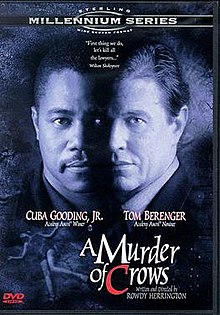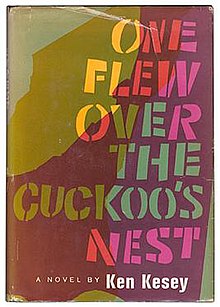A Brief History
On January 29, 1845, Edgar Allan Poe, the Baltimore writer of such classics as “The Telltale Heart,” “The Pit and the Pendulum,” and “The Goldbug,” published his famous poem, “The Raven,” certainly one of if not the most renowned poem in American literature, and ranks among the most famous of poems. Today we list 10 great works of American Literature that feature a bird in the title.
Digging Deeper
1. “The Raven,” Edgar Allan Poe, 1845.

This poem is the work that got Poe widespread fame and acclaim, although unfortunately that fame never translated into wealth. The Raven has been parodied and variously illustrated, as well as memorized by Abraham Lincoln! It is said to have inspired “Bolero” by Ravel and had influence on such other works as Lolita by Nabokov, and has innumerable cultural reference in print, film, television and the stage. The poem is about a lost love and evokes the deepest of emotions. Dead at the age of 40 from a disputed list of ailments, Poe is remembered in the annual Edgar Awards for mystery writing. The NFL franchise from Baltimore is named The Ravens in honor of Poe. (Poe was born in Boston and lived in several different cities.)
2. To Kill a Mockingbird, Harper Lee, 1960.
A Pulitzer Prize winning novel, this epic work of American literature was a massive hit and was quickly (1962) made into a major motion picture starring Gregory Peck, winning 3 Academy Awards. The story is about an African American man falsely accused of raping a White girl in the South, and the intrepid attorney that defended the man despite strong racial sentiment in his town. The story is loosely based on an incident in the Alabama town Lee grew up in when she was only 10 years old in 1936. Often required reading for school children, this classic was the only work by Lee until she released Go Set a Watchman in 2015, a book touted as a sequel to To Kill a Mockingbird, but largely assumed by critics to actually be a first draft of Mockingbird. Watchman also dwells on racial prejudice, and paints the star of To Kill a Mockingbird, Atticus Finch, as more of a racist himself than we have been led to believe. Lee died in 2016.
3. I Know Why the Caged Bird Sings, Maya Angelou, 1969.

Possibly the greatest African American poet, Angelou was born Marguerite Johnson in 1928 in Missouri, and moved to Arkansas as a girl. Her experience with racial prejudice and hatred is referenced in the title, with the “Caged Bird” analogy referring to herself. The book is an autobiography up to age 17 and is the first of 7 volumes. Angelou wrote those 7 autobiographies in addition to many essays and poems, was employed as a professor at Wake Forest, lectured, campaigned for political candidates, recited at President Clinton’s inauguration (only the second poet to recite at a presidential inauguration), directed a movie, and received numerous awards and honorary degrees, though never actually earning a university degree herself. Growing up she worked a wide array of jobs, including night club dancer and “sex worker!”
4. The Thorn Birds, Colleen McCullough, 1977.

Set in a sheep station in the Australian outback, this epic tale of a family stretches from 1915 to 1969 and is the best selling book by an Australian in history. In fact, the book has sold over 33 million copies. The 1983 television mini-series became the second most successful television mini-series in US history (after Roots). The story deals with family relationships, the clergy, and vast wealth. Of course, cut throat self-serving actions and deception play a key role in the story as well. Obviously, death has to be dramatic, so murder and a murderous wild boar make their appearances in the tale, as does other drama such as a difficult labor (the birth kind). The title refers to a myth about a bird that once born, must seek the perfect thorn growing on a tree on which to impale itself, singing a beautiful tune as it dies. (I know, I do not get it either.) Apparently the “myth” was invented by the author just for this book! (Another “thorn bird” myth that has nothing to do with the book is a goldfinch that supposedly pulled a thorn from the head of Jesus Christ as he died on the cross.)
5. The Pelican Brief, John Grisham, 1992.

After finding tremendous success with his first 2 legal thrillers (A Time to Kill and The Firm), both of which were adapted as highly successful films, Grisham continued his dramatic stories of legal eagles fighting murder and injustice with The Pelican Brief, a story about murder and conspiracy to defeat environmental protections of, you guessed it, pelicans! The story starts with the assassination of 2 Supreme Court justices, and the search for the reason these killings are related even though they at first to appear to have nothing in common. Is the White House involved? The story is a thriller, and the adaptation for film is excellent as well.
6. A Murder of Crows, Rowdy Herrington, 1999.

Written and directed by Herrington, the main character in the screenplay is a writer who by circumstance comes into possession of a manuscript whose author happens to die, apparently without heirs. The struggling writer has the manuscript published as his own, and then bad things start happening! The “book” is a big success, but the murders contained in the story turn out to be tales of real life crimes, and the writer gets blamed. Can he prove his innocence? Will he reveal himself to be a plagiarizer? Plenty of intrigue and deception to keep you guessing. Cuba Gooding Jr. does a marvelous job playing the main character in the movie.
7. One Flew Over the Cuckoo’s Nest, Ken Kesey, 1962.

A powerful story about a live wire character in the mental health system, this book explores many aspects of mental illness and the people that both suffer from the malady and deal with the people suffering from the frustratingly difficult to treat problem. The movie based on the book (1975) was only the second picture to win the Best Actor (Jack Nicholson), Best Actress (Louise Fletcher) and Best Movie Oscars, as well as 2 additional Academy Awards. The story was also adapted for the stage. Told from the point of view of a large Native American inmate at the mental hospital, Kesey was allegedly experimenting with LSD when he wrote the book, and portions of the story are markedly different enough to cause one to believe those portions were affected by the drug use. The story includes subtle references to overreaching control by the government.
8. The Maltese Falcon, Dashiell Hammet, 1930.
This famous detective story was originally run as a serial in the Black Mask magazine in 1929. It set the archetype for the hard-boiled private detective persona that followed, with Hammet’s Sam Spade played by Humphrey Bogart (his real name!) in the famous 1941 film. The story features a femme fatale, double crossers, murder and intrigue. Ranked by The Modern Library as #56 of the 100 Best English Language Novels of the 20th Century, the story is a bit different for the genre, in that it is told by a third person narrator and the characters never “speak” for themselves, just their actions and words are described. The title bird is supposed to be made of gold and contain jewels as well, but the one recovered by the main characters is found to be a fake. Other movie adaptations have been made, including a 1975 spoof called The Black Bird. The book was also adapted for the stage.
9. Where Eagles Dare, Alistair MacLean, 1967.

MacLean is one of the greatest writers of spy and adventure stories, and many of his books were turned into major motion pictures, including (sort of) Where Eagles Dare. (Others include Ice Station Zebra, The Satan Bug, When Eight Bells Toll, The Guns of Navarrone, Breakheart Pass and others.) The book deals with a World War II special operation by a combined American/British team (led by Richard Burton and Clint Eastwood in the movie) to kidnap a captured American general. Lots of action, plot twists, deception and intrigue. Great movie, great book. The novel and screenplay were written simultaneously!
10. Old Mother Goose’s Rhymes, Charles Perrault, 170?

A collection of rhymes and fairy tales by unknown authors, these timeless stories and poems were collected by Perrault (1628-1703), a Frenchman, and perhaps modified by him, including “Puss in Boots,” “Cinderella,” “Little Red Riding Hood,” and “Sleeping Beauty.” His stories probably influenced the Brothers Grimm and were first translated into English around 1700. Few children, if any, are not familiar with these stories and poems, with this work probably touching more people than any of the others listed.
Question for students (and subscribers): What other works would you include on this list? Please let us know in the comments section below this article.
If you liked this article and would like to receive notification of new articles, please feel welcome to subscribe to History and Headlines by liking us on Facebook and becoming one of our patrons!
Your readership is much appreciated!
Historical Evidence
For more information, please see…
Grisham, John. The Pelican Brief. Doubleday, 1992.
Hoffman, Daniel. Poe Poe Poe Poe Poe Poe Poe. Louisiana State University Press, 1972.
Lee, Harper. To Kill a Mockingbird. HarperCollins, 1960.

